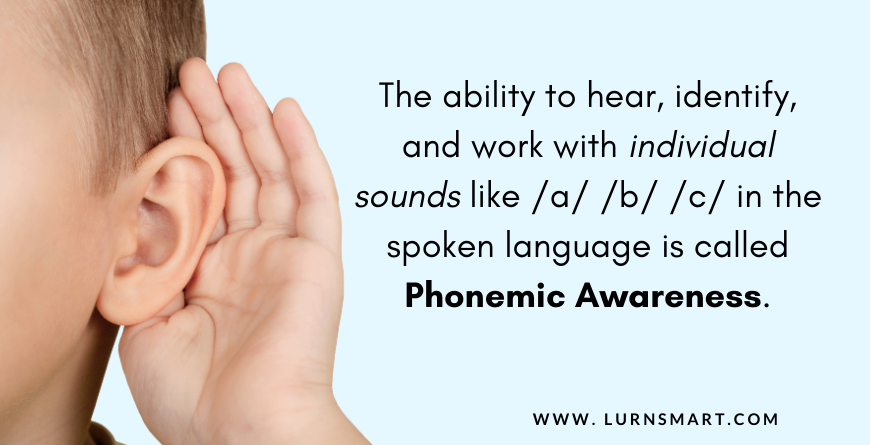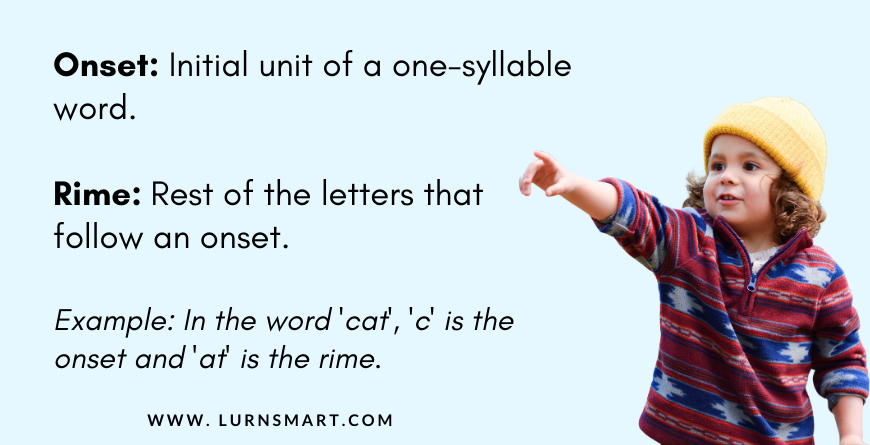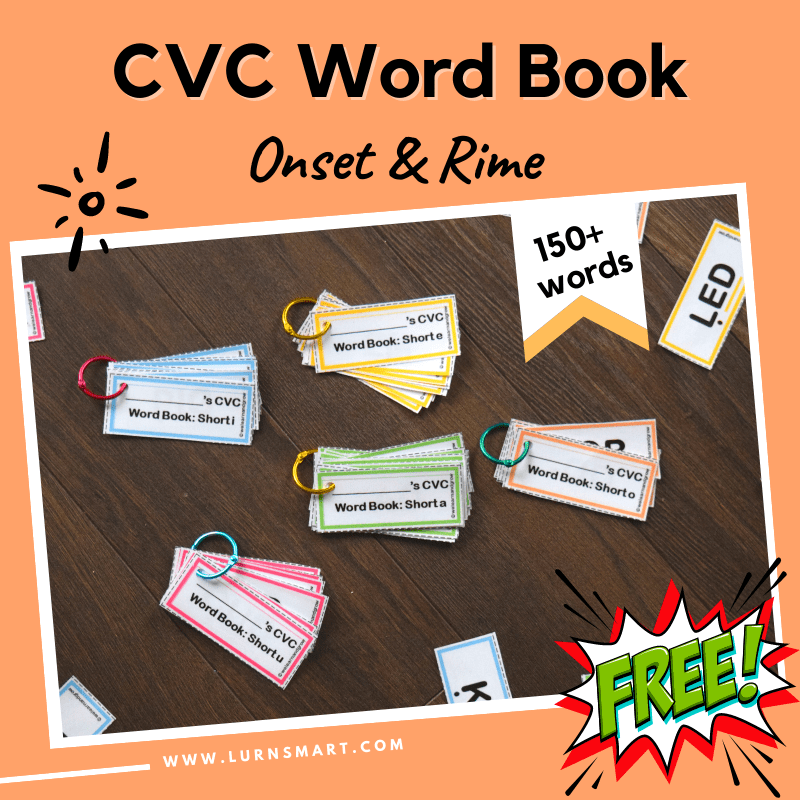Do you know that Phonological awareness activities can help lay a strong reading foundation?
In this post, I’m going to share with you simple yet creative ideas to build 5 important phonological awareness skills as well as provide you with FREE Phonological Awareness activity printables that you can use with your child!
But before we get there, if you are someone who is new to the term ‘phonological awareness,’ then you might wanna learn about this important Phonics buzzword first.
So click on the link that is more relevant to you to get to a particular section of this blog post!
- What is phonological awareness?
- Why is phonological awareness foundational to your child’s reading success?
- Phonological awareness activities to build reading/spelling skills.
If you are in a hurry, just click here to learn about the different phonological awareness activities that you can do to develop the skills needed for your child’s reading and spelling success!
And don’t forget to grab your FREE Activity Printables from the links below!
What is Phonological Awareness?
People often think that learning to read begins with teaching the child the letters of the alphabet or the relationship between the letters and their sounds.
But this is so not true!
Learning to read begins long before the child could learn the letters of the alphabet or understand the letter-sound relationship.
It begins with the child tuning into the sounds in the spoken language!
Because sounds are the building blocks of words, both spoken and written!
Let me explain!
A toddler who doesn’t know his or her ABCs can still do the following:
Identify that the word COW begins with the sound /k/.
Recognize that the words CAT and COW share the same beginning sound /k/.
Recognize that the words CAT and MAT share the same ending sound /at/.
This ability to hear, identify and work with sounds or sound units in the spoken language is called ‘Phonological Awareness.’
As you might have noticed from the above examples, to develop phonological awareness, your child does not need his or her eyes but only needs his or her little ears!
Therefore, it is not necessary that you wait until your child learns ABCs, you can go ahead and help your child tune in to the sounds in the spoken language by doing fun phonological awareness activities.

Why is Phonological Awareness Foundational for Your Child’s Reading Success?
A common question that most parents ask is, “How is tuning into the sounds in the spoken language gonna help my child learn to read and spell?”
You see, as I already mentioned, learning to read does not begin with phonics instruction!
To be able to understand the letter-sound relationship and other phonics rules, an adequate level of sound awareness in the spoken language must be reached.
Here’s why!
Let’s say a child has learned the 26 letter names and sounds but has difficulty doing the following:
Has trouble hearing the /m/ sound in words.
Has difficulty differentiating the /m/ sound from the /n/ sound.
Finds it hard to put sounds together (blend) to form words.
Do you think the child would find reading and spelling interesting and exciting?
Of course, not!
That is why it is extremely important to train those little ears to pay attention to the sounds and sound units in the spoken language first.
Because a child who can hear, identify and work with sounds in the spoken language, will find it simple and easy to do the same when it comes to the written language.
The good news is, most kids don’t require an adult to teach them phonological awareness, they can pick up this skill easily just by being exposed to an environment that is rich with language.
Phonological Awareness Activities to Build Reading & Spelling Skills:
Based on what we have discussed so far, I’m sure you agree that Phonological Awareness is foundational to your child’s reading and spelling success.
Now let’s learn about the 5 important Phonological Awareness skills and ways you can help your child develop these skills through simple everyday interactions and fun activities.

1. PHONEMIC AWARENESS:
The first and the most important phonological awareness skill is Phonemic Awareness.
I know, the terms ‘phonological awareness’ and ‘phonemic awareness’ sound alike, but they are two different things.
Let me explain!
Phonological awareness is a larger skill that deals with both sounds and sound units in the spoken language, whereas phonemic awareness only deals with the sounds in the spoken language.
Here are some examples!
When you say that the words ‘sat’ and ‘bat’ end with /at/, you are working with two sounds /a/ and /t/. This is a sound unit because there is more than one sound that is involved.
Whereas, when you say that the word ‘sat’ ends with the sound /t/, you are just working with one sound /t/.
So hearing, identifying, and working with individual sounds (one sound at a time) in the spoken language is called ‘Phonemic Awareness’.

There are 5 important phonemic awareness skills and mastering these skills can drastically increase your child’s awareness of sounds!
And according to Dr. Marilyn Adams, cognition and education specialist, the development of these phonemic awareness skills is one of the most important predictors of early reading success.
Phonological Awareness activities to develop Phonemic Awareness:
Now that you know what phonemic awareness is, check out my blog post 5 Simple Phonemic Awareness Activities to Develop Sound Awareness to l
earn more about the different phonemic awareness skills and ways you can develop them through everyday conversations and fun activities.
2. RHYMES AND ALLITERATIONS:
Rhymes and alliterations are nothing but common sounds between words.
For instance, rhymes are common ending sounds between words, whereas alliterations are common beginning sounds.
Here are some examples!
The cat sat on the mat.
In the above example, the words, cat, sat and mat share the same ending sound /t/ or /at/ so they are called ‘rhyming words’.
Peter Piper picked a peck of pickled peppers.
In the above example, the words Peter Piper picked peck pickled peppers are alliterations because they share a common beginning sound /p/.
Learning about rhymes and alliterations, help your child notice and work with sounds in the language easily!

Phonological Awareness activities to learn about Rhymes and Alliteration:
Here are some fun activities and games that you do/play to increase your child’s awareness of rhymes and alliteration!
The cool thing is you hardly need anything to do these activities!
1. Nursery Rhymes:
Nursery rhymes are loaded with words that rhyme!
So singing nursery rhymes is another easy way to draw your child’s attention to the common sounds between words.
Check out the 30 Popular Nursery Rhymes for Kids in English by Bilingual Kidspot for fun nursery rhymes that you can sing along with your child.
2. Rhyme Time:
Games are fun!
So to increase your child’s awareness of rhymes, play Rhyme Time!
To play this game, just pick a couple of simple rhyming words along with a word that doesn’t rhyme and let your child identify the words that rhyme.
Here’s an example:
If you pick the words FOX, BAT, and BOX, your child should be able to identify that the words FOX and BOX rhyme as they both share the same ending sound /ks/.
Alternatively, you can play the game, ‘Pick the Odd One Out!’
So instead of words that rhyme, ask your child to pick the word that doesn’t rhyme!
Here’s an example:
If you pick the words FOX, BAT, and BOX, your child should be able to identify that the word BAT is the odd one out because it has a different ending sound than the words FOX and BOX.
3. Rhyming Pair:
This is another simple yet fun game to build your child’s awareness of rhymes.
To play this game, give a word to your child and have your child come up with a rhyming word.
Here’s an example:
If you say ‘see, your child should say ‘bee’ or even a nonsensical word like ‘nee’. The point is to help your child hear and recognize the sound /ee/ in words.
4. Alliteration Tongue Twisters:
Alliteration tongue twisters are amusing and entertaining so get ready to giggle with your child!
What I like about them is that apart from directing your child’s attention to similar beginning sounds in words, they also help improve pronunciation and fluency of speech.
Here’s an example:
Sheep should shower in the shed.
Apart from these activities, reading is the simplest way to direct your child’s attention to rhymes and alliterations because children’s books are often filled with them!
So while reading, make sure you point to words that share common beginning and ending sounds!
‘Look! The words HAT and HAM share the same beginning sound /h/’
‘The words BAT, CAT, SAT share the same ending sound /t/’
Check out the below blog posts for the list of classic children’s rhyming and alliteration books:
- 20 Must-Read Rhyming Books for Kids
- 10 Interesting Alliteration Books for Kids
FREE Rhymes and Alliterations Activity Printables:
As promised earlier in this blog post, here are some FREE printables that you can use to help increase your child’s awareness of rhymes and alliterations.
Click on the images to grab your freebies now!
3. SYLLABLES:
Syllables are another important phonological awareness skill that will help your child read and spell words efficiently.
So what are syllables?
Well, syllables are single, unbroken units of sounds in words!
Here are some examples:
Say the 3 words CUT, CUTTING, and CARPENTER aloud and clap for each uninterrupted sound.
- Did you notice that there is no interruption when you said the word CUT? So the word CUT has 1 syllable!
- What about the word CUT-TING? Did you notice that you paused briefly after you said CUT before saying the next unit of sound TING? So the word CUT-TING has 2 syllables.
- Finally, what happened when you said the word CAR-PEN-TER? Did you notice the two pauses? A pause after CAR and a pause after PEN? So the word CAR-PEN-TER has 3 syllables.
The reason why helping your child learn about syllables is important is that when your child knows how to chunk sounds together correctly, it will be easy to:
- Spell words efficiently.
- Decode words quickly and accurately.
- Pronounce words correctly.

Phonological Awareness activities to teach Syllables:
1. Clap and Count:
There are many ways to teach syllables but the easiest and the most common way is to say the word aloud and clap for each uninterrupted sound in the word like how you just did for CUT, CUTTING, and CARPENTER.
So pick a couple of words a day to clap and count the number of syllables with your child.
Just make it look like a game and your child will enjoy it!
FREE Syllable Activity Printable:
By the way, if you want to do some fun hands-on activity to help your child practice syllables then you can download our FREE Syllable Clip Cards for a game of clap, count, and clip!
Click on the image to grab your freebie now!
4. ONSET AND RIME:
Onset and Rime is another phonological awareness skill that helps children learn words especially word families easily.
So what are onset and rime?
Well, an ‘onset’ is the initial unit of a one-syllable word. This includes a single consonant letter or two or more consonant letters.
Whereas, a ‘rime’, refers to the rest of the letters that follow the onset. This includes a vowel and the final consonant letter or letters if there are two or more consonants at the end of the word.
Here are some examples:
In the word CAT, C is the onset, and AT is the rime.
In the word STAND, ST is the onset, and AND is the rime.

Phonological Awareness activities to teach Onset and Rime:
1. Complete the Word:
To play this game, write a ‘rime’ and letting your child come up with an onset to create a new word and vice versa.
Here are some examples:
If you write the rime ‘at’, your child should come up with the onset ‘m’ to form the word MAT.
Note: You can challenge your child to come up with as many words as possible – ‘cat’,‘sat’, ‘fat’, ‘bat’, ‘hat’, ‘pat’, ‘rat’, ‘flat’.
Apart from this game, you can pick a couple of words while reading and help your child break the words down into onset and rime!
FREE Onset & Rime Printable:
If your child has started reading simple CVC words, then grab our FREE Onset and Rime Word Book to help your child practice reading word families!
However, be cautious while doing so, coz’ children who are introduced to word families at the beginning of their reading journey are more likely to get into the habit of word-guessing!
And word-guessing is one of the most common factors that cause reading difficulties in children!
So use this FREE resource sparingly!
I suggest, instead of going by word families, you can jumble up the cards and encourage your child to sound out each letter and blend them together to read the word!
Click on the image to grab your freebie now!
5. WORD AWARENESS:
Word awareness is one of the very first phonological awareness skills that little children learn!
So what is word awareness?
Well, word awareness is the ability to understand that a sentence is made up of individual words.
Here is an example:
The sentence ‘The big dog likes bones’ is made up of 5 different words.
Phonological Awareness activities to build Word Awareness:
1. Silly Sentence Word Count:
To play this game, come up with a silly sentence and let your child count the number of words in the sentence.
Here are some examples:
‘The dog wears a pink hat.’
‘The cat barks at the banana.’
Apart from playing this game, while reading, talk to your child about how words can be put together to convey a thought!
This will help your child learn about words and sentences in a more organic way!
I hope you found the tips and phonological awareness activities shared in this post useful.
If you did, share this post with your friends coz’ sharing is caring 😉
Final Notes:
If you are supporting your child to read at home, then you might want to read my blog post Teach Your Child to Read Using Phonics: The Ultimate 7-Step Guide for step-by-step instructions and all the necessary resources that you might need to help your child read and spell easily!
If you are looking for a kid’s reading program, I welcome you to join our LURN Phonics Kid’s Reading Program which is a step-by-step parent-led program that is designed to help your child read and spell fluently and efficiently!
To take up this program, you do not need any prior phonics knowledge or teaching experience!
Everything is so simplified for you that all you need is a playful attitude and the enthusiasm to set aside 10-15 minutes a day to teach your child to read!
The best part is, our reading program is multisensorial and fun-based so no more tears while learning to read but lots of fun and play!
So go ahead and check out our LURN Phonics Kid’s Reading Program and I cannot wait to help you help your little one become an amazing reader and speller 🙂








